- Administrator
- Albums and Singles
 C. Spencer Yeh is a name that everyone might start hearing more of, now. There are a couple reasons to support this statement: one of them having to do with sheer prolific force and the other because he's blazingly listenable and will appeal to a lot of people who like a lot of different music.
C. Spencer Yeh is a name that everyone might start hearing more of, now. There are a couple reasons to support this statement: one of them having to do with sheer prolific force and the other because he's blazingly listenable and will appeal to a lot of people who like a lot of different music.
Cenotaph
Yeh currently has a full-length available on Thinwrist, a collaboration with Comets on Fire out on Yik Yak, and this double-disc set cataloging unreleased tracks, songs from limited edition CD-Rs, and noise pulled from now out of print cassette releases.
Burning Star Core has been around for nearly ten years and, as such, it's difficult to call Yeh and his music new. Before anybody outside of small, exclusive, and hip circles was talking about Yeh and his approach to electronic music, he was releasing music through his own Drone Disco label and contributing to all manner of compilations and smaller labels. By 2003 or 2004 he had music available on Gameboy Records and Chondritic Sound. He has a huge past and an even more impressive sound. His music is diverse, ranging from harsh noise dysfunction to playful melodic constructions that might owe some recognition to Terry Riley. He fuses both approaches, deconstructs them, rewires them, and rethinks them completely over the course of this two-disc release and has me very excited to hear more full-length material from him.
Despite spanning nearly ten years and despite being constructed from a slew of divergent material, Mes Soldats Stupides '96-'04 presents a coherent vision. Yeh is always occupied with different approaches to his gear and to composition, but his music constantly returns towards the exciting, lo-fi, and tense perspective of dramatic composition. A song like "White Swords in a Black Castle" can be considered nothing but a dramatic experience. The layers of distortion play over the simple, orchestral melody underneath create a dizzying effect, like plummeting to the Earth without fear of death. His techniques are nearly always immersive, enticing instead of repulsive, and content with being both approachable and strange.
This compilation is also compelling because it clearly depicts a development that has gone untouched by almost everyone. Despite the critical praise that The Very Heart of the World has received, Yeh's other work is gone almost completely unrecognized by everyone that can't afford to keep up with every band and every label constantly cycling through the electronic underground. Visiting certain message boards is enough experience for me to know that it would've been near impossible for me to ever find out about Yeh with so many bands and labels releasing literally hundreds of albums every six months. And despite this complication, songs like "Everything 2000" or "The Point of Departure is Not to Return" are golden, in need of more exposure, and worth purchasing the entire release for. When Yeh employs his noise, he emphasizes it, bleeds it of its soul, and chokes it until every last ounce of necessary energy is squeezed out.
His compositions don't ever sound like pure chicanery, there are subtle and beautiful peaks accompanied by low troughs and explosive depressions. Much of the music will sound somewhat familiar because it owes a little bit to those who have gone before: krautrock, ambience, free-jazz, noise, drone, rock 'n roll, avant garde composition, minimalism, it's all here in some mutated and lovingly cared-for form. Yeh has fused it all together, made it his own, and perfected his sound for a long time. And now he's finally showing everyone just how excellently it can all come together.
This album is a necessity for anyone who has some love for strange music and who feels that there isn't so much new under the sun to enjoy. Yeh's not just a new face, he's an erudite listener with about as many faces as a president under fire and each of them are equally intriguing. Such immediately striking music such as this is pretty rare and there's little doubt that Yeh is an imaginative guy with a lot of music left to make; there's almost a decade of wildly contrastive music on two discs here. He might as well be a bottomless pit of sound.
This is going to be in my player for a long time or at least until I can get my hands on an album or two. I feel the beginning of an addiction coming on and, if we're lucky, Burning Star Core will be releasing music as frequently as before, but now everyone will know where and when they'll be available.
samples:
Read More
- Administrator
- Albums and Singles
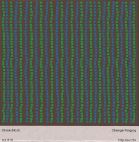 Change Ringingfollows Block’s Pure Gaze and Mobius Fuse in a trilogy of sorts,and like those belovedpieces, Change is a perfectly paced,not-a-second-too-short, 30-minute suite for chamber group and environment, everin a limbo state between where found sound ends, instrumentation begins, andwhere digital processing tangles the timeline.
Change Ringingfollows Block’s Pure Gaze and Mobius Fuse in a trilogy of sorts,and like those belovedpieces, Change is a perfectly paced,not-a-second-too-short, 30-minute suite for chamber group and environment, everin a limbo state between where found sound ends, instrumentation begins, andwhere digital processing tangles the timeline.The piece feels more subtle and more definedthan its predecessors: mainly because there is more open space, more quiet, moreof the nagging sense of each sound’s designation in both breaking down thetransparency of the whole and working within it. PureGaze and Mobius Fuse worked firstas beauteous, lush journeys aloft on the dream currents of muffled fireworks,bowed strings, night insects and organ wash. Only later would the pieces break down and settle in the mind, letting somekind of science develop out of Block’s diverse archeology. ChangeRinging feels intent on rushing that settling.
The opening trombone bleat/fog horn/syntheticblast (you can never tell) acts almost like a volume check, setting up for aclose listen. The section of gurgling,chirping tones that follows remind me of works by Matthew Schumacher and theircreation of an immaterial surface that rustles, fades, and pops withoutbecoming so effervescent as to engage its own disappearance or shimmeraway. Snatches of woody, resonantinstruments closely recorded bounce off of pure tones and the slight cracks ofsomething outside, in a blanket of thick, gliding strands. Another fog horn from the silence brings thesecond phase, the bizarre traffic of fire-cracking static, an earthy rustle,and the parts of a few instruments,no doubt including Bhob Rainey’s sax in full clap and miniature shuffle.
The key, of course, is Block’s recordingmethod and volumetric arrangements; high volume listening really pulls the headin thousand places, and average levels will have you in a pleasant strainingfor the details. Change’s conclusion is a stew of quiet commotion, outsides,insides, and inbetweens gathering in a blissful flux of indescribabledirection. Chamber stings equalunderwater poolhall equal screaming blues of sky inside a twist of bark: asquabbling that is not uniform, not even a working together, but a fittingtogether, a wonderful, befitting fitting together.
samples:
Read More
- Administrator
- Albums and Singles
 Invented by Benjamin Franklin in 1763, the glass harmonicais quite different than today’s mouth harmonica. Sound is createdby the movement of wetfingers along the rims of more than two dozen glass discs, arrangedhorizontally and moved using a foot-pedal. Apparently, playing the glass harmonica became a hip activity no doubtbecause of the enigmatic sounds its produces, compared at thetime to heavenly voices, perhaps also the cause of “serious nervousbreakdownsamong its mostly female players.”
Invented by Benjamin Franklin in 1763, the glass harmonicais quite different than today’s mouth harmonica. Sound is createdby the movement of wetfingers along the rims of more than two dozen glass discs, arrangedhorizontally and moved using a foot-pedal. Apparently, playing the glass harmonica became a hip activity no doubtbecause of the enigmatic sounds its produces, compared at thetime to heavenly voices, perhaps also the cause of “serious nervousbreakdownsamong its mostly female players.” Those who’ve heard people playing music with glass (not atall uncommon today), or anyone who’s worked a wet finger around the top of awater glass, will be familiar with the building blocks of a glass harmonica’ssound: steely, constant drones often touched by the sense of rushing or anxiousvelocity. Perhaps the way that the discsare arranged, or the fact that they are discs and not more concave shapes,produces, in the glass harmonica, a profoundly resonant exaggeration of thesounds produced by a wet water glass rim. The overtones created by concurrent drones are comparable to those of agong or large metal disc, minus the moment of striking impact and the variableof decay. Imagine sounds with theup-front urgency of sine-wave tones or tuning forks (the sound source forKubisch’s first release on Semishigure), but made strange and irregular by anobscured ringing, the glistening and wavering of vibrating metal.
Not part (from what I can tell) of one of the installationworks for which Kubisch is most famous, Armonicais almost one hour of glass harmonica recordings, unaltered by the artist. The silences and short fades that cut thehour into intervals give evidence to a kind of sectioning or arrangement byKubisch, a compositional intent that is nearly lost to the sense of awedirected at the instrument itself. It’simmediately hard to believe the sounds are non-manipulated until the noise ofthe player’s foot comes sneaking through like a message from the other side…thefamiliar one.
The higher-pitched discs sound at first like violins in aConrad drone formation, tactile in their suggestion of movement, but soonlifting to the front of the sound field with the nervous constancies of puretones, encompassing and impossible to let ride in the background. Lower-pitched discs operate within adistanced ringing similar to tuning fork notes, but always possess some form ofminute, rhythmic imperfection, perhaps due to the finger’s revolution aroundthe rim. When layered, these tinyundulations, like absent thought patterns, create bizarre,spatially-disorienting effects in conjunction with the more absolute sounds ofthe higher, rushing drones. The effectreminds me frequently of a more subtle version of the warm, warbly antique synthsound that Boards of Canada use so often. Kubisch’s piece, in contrast, is numbing and unforgiving; it’s closer inoverall feel to the work of Phil Niblock, despite the frequency of the breaksin the sound’s forward momentum. I feelthe recognizable sensations of mind-suspension combined with a very realgravity and heavy placementhere. Something about these sounds Ihave not pinned down makes them seem utterly alien but at the same time so sopresent. It’s driving me a bit (more)crazy, feeling like I could make more than a few friends with some 18thcentury harmonica-playing spinster freaks. Thank you, Christina Kubisch.
samples:
Read More
- Administrator
- Albums and Singles
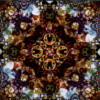 Chuck Palahniuk's meditation on silence and noise gave me an idea last night while listening to this disc—all those harsh noise providers out there must be afraid. They sit in front of their equipment and they come up with ways to drown the world around them out of existence, at least for a little while.
Chuck Palahniuk's meditation on silence and noise gave me an idea last night while listening to this disc—all those harsh noise providers out there must be afraid. They sit in front of their equipment and they come up with ways to drown the world around them out of existence, at least for a little while.Troniks
If this is at all possible, then the collaboration between Phil Blankenship and the members of Yellow Swans might be the most arresting and peaceful space ever created under the name of noise. Coil did something similar when Constant Shallowness Leads to Evilwas performed live: they claimed to provide a space where the listenercould wrap themselves in the most protective blanket ever and, fromthere, contemplate the world around them.
Seeing how harsh noise almostalways confuses me and ultimately turns me off, approaching any musicof that kind in this way is helpful. This roughly nineteen-minuteone-song recording was performed live at Camp Blood in 2004. I'm notsurewhere Camp Blood is, but if this was actually recorded in the woodssomewhere, the entire scene must have been terrifying. The name "CampBlood" immediately reminds me of nightmares I had when I was little,when Jason would chase me around in his damn hockey mask until I rippedthat mask off his face and he disappeared altogether. In the comfort ofmy room, however, this recording sports the following benefits: itdrowns out the noise my roommates and their friends make in the nextroom. All the noise tends to blur together and take on the propertiesof a drone, it has reduced my frustration on several occasions and hasalso managed to put me to sleep when played at low levels. I know thisisn't what harsh noise intends to do. I know it is supposed to befrightening and I know that the sudden shock of squeals and improperlytuned radios are supposed to repulse me and somehow remind me of allthe silly conventions normal music adheres to helplessly. But thisharsh noise stuff is beginning to sound like a weird mirror of all the"drone" music I'm in love with.
Even when played loud, music like thestuff that's on this particular release sounds likeattention-hungry sound manipulation. Not that a Colin Potter releaseand this one have anything in common other than their inherent distancefrom most of the musical world, but there is something to be said ofconstant sound and unrelenting density when mentioning drone or harshnoise. Both are present, but for the most part are used for differentends. When the noise first hit my ears on this release, I was slightlyshocked and I almost turned it off. After ten minutes of its continuouscacophony, I was almost unaware it was even playing. Listening to itover and over again has alerted me to the fact that sometimes harshnoise isn't what it claims to be. It's a sort of oxymoron.
Okay, soPrurient's last release really is a harsh piece of noise work, buteventually noise just drops off into the background and becomes ashield, just like Coil said it could. Once someone is comforted bynoise and made to feel its positive contributions, can one really callsuch a thing harsh? That's exactly what this little release does, itstarts out as a disgusting figure of impending doom and ends up beingthat fort you built when you were little, the one that was perfect forescaping the real world and imagining whole new ones.
So the questionis, are we all noise-oholics because we can't stand the peace andsolitude of silence or is it because noise really drowns out all theother crap constantly shoved down our throats through the radio andtelevision? In physics noise is the disturbance of a signal, like adistortion of some kind. Here noise is really the same thing, but thething it's distorting is probably best left distorted. Who wants tohear their roommates yammering on in the next room or the next "clever"beer commercial anyways? Stuff like this might be the warmest blanketyou can find this Christmas. It is the season for commercials,afterall.
samples:
Read More
- Administrator
- Albums and Singles
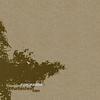 In my opinion most remixers are lazy, worthless slugs that bring nothing of interest to music. Funckarma don’t appear to fall into this low life form category.
In my opinion most remixers are lazy, worthless slugs that bring nothing of interest to music. Funckarma don’t appear to fall into this low life form category.
Funckarma are Don and Roel Funcken and they like to remix. Refurbished One is a collection of various remixes they’ve done. I’ve heard of pretty much no one apart from Plaid so I can’t tell you how they compare to the originals. The album is mediocre at worst and mildly interesting at best. Funckarma are not the most original artists I’ve heard, the tracks here all follow the well trodden path of late '90s electronica with blips, beeps and synth that sounds like Autechre or Aphex Twin. Although in fairness, originality is not something I associate with the remixing world.
Most of the remixes are entertaining enough, “Duuster & Donker” and “Als het iemand is” being the two tracks that tickled my fancy the most. Other tracks like “”Nore” and “Alive in Arms” do little for me. I must point out that there are no real bad tracks on the album but that Refurbished One just lacks some inspiration. One thing I will celebrate about this album is how unified it sounds. There are fourteen different artists being remixed yet the album gels together like it was the work of one artist. Few remix artists have the strength to put their own stamp on someone else’s work.
Refurbished One is fairly laid back and is something I wouldn’t mind listening to while cooking dinner or having a few drinks but not something I’d put on to immerse myself in.
samples:
Read More
- Administrator
- Albums and Singles
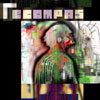 Recompas main man Travis Thatcher gave me a copy of his first album forFlorida’s Nophi label months ago, but I’m ashamed to admit that thedisc sat at the bottom of a bag and then the bottom of a stack on mydesk until just now. I’m glad that I finally dug it up as it’s quicklyfound a place in my year-end “best of” list.
Recompas main man Travis Thatcher gave me a copy of his first album forFlorida’s Nophi label months ago, but I’m ashamed to admit that thedisc sat at the bottom of a bag and then the bottom of a stack on mydesk until just now. I’m glad that I finally dug it up as it’s quicklyfound a place in my year-end “best of” list.
As the host of an electronic music show on Georgia Tech’s student-runradio station and a Tech grad himself, Thatcher’s music geekcredentials precede him. I expected his record to be something like ahighly technical filter of his influences, built around some insanelycomplex homebrewed software or gadgets that he had engineered—somethingfidgety and maybe overly ambitious. Instead, the process behind Definitionis nice and transparent, and the execution is nearly flawless. As I spinthe record more and more, I find myself transfixed with the soundscoming from the speaker rather than absorbed in the workshop-likefascination with how he’s pulled it all together.
The Recompas (sometimes spelled re com pas) sound is adub-tickled, low tempo collage of processed beats, synth melodies, andscrap bits of noise that sound roughly familiar but don’t identify withany particular scene. What I love most about Thatcher’s work is thatit’s dirty as hell, with loops that are scraped across gravel, beatento death, and then full of artifacts and wandering hints of noise thatfill up the space perfectly. Recompas plays with some primitive synthsounds that echo '70s BBC sci fi music and game melodies, but theresult never sounds like a throwback or rehash. That by itself is ahuge accomplishment.
But my admiration of what Recompas has pulled off here extendsmostly from the emotional weight and depth of sound he’s managed towrangle. “Bruxism” bristles with a lurking dread and disembodiedsaxophone married with a skittery beat evoking the best of the dubterror heyday, while “Pupal,” works a Tron-like melody and some choice,dead slow percussion to great effect. “Appypolyologies” takes awonderful melody and builds it up with dubby bass and scattershot drumprogramming creating a track that aches as it moves. The record isconfident and accomplished, intricate and banging at the same time, andit finishes off with a trio of remixes from r_garcia, Tricil, andRetconned that are all solid and varied, with plenty of Recompas’personality still in tact.
What’s most exciting about Definition is that Thatcher has laid out a firm foundation for hissound, and he’s announced his presence loudly. While the record hintsat stuff that might be found on Skam and Sub Rosa, it is ultimately allRecompas: twisted, distorted, and cobbled together in a way that is aseffective as it is unique. I wouldn’t at all be surprised to see a morewell known label license this record from Nophi for a larger release,and frankly it deserves as many ears as it can find. Unless half adozen shocking masterpieces drop out of the sky in the next 30 days,this record’s definitely won a spot in my personal top 10 for the year,and with any luck it will speak to many others the way it has spoken tome.
samples:
Read More
- Administrator
- Albums and Singles
 The Hangable Auto Bulb EPs have been a bit of a holy grail for Aphex Twin fans and now I understand why. It covers in eight tracks most of the ground that he covers in the ten years or so since the EPs’ original release.
The Hangable Auto Bulb EPs have been a bit of a holy grail for Aphex Twin fans and now I understand why. It covers in eight tracks most of the ground that he covers in the ten years or so since the EPs’ original release.
Everything on Hangable Auto Bulb is definitively Richard James, from oddball samples about mashed potato on “Children Talking” to the neck snapping breakbeats. I felt like I was listening to his entire back catalogue condensed into just over half an hour. What is even better is the fact that most of the material is danceable. Not in a jerky, beard-stroking IDM way but actual fun appreciation of music with your body.
“Laughable Butane Bob” is very nearly a cheesy dance anthem but it’s pulled back from musical oblivion by James’s idiosyncratic blending of wobbly synth lines with some of the finest beats made by a machine. Another remarkable thing about Hangable Auto Bulb is that it doesn’t sound dated or tainted by countless emulators of James’s style. I found it as fresh today as it sounded a decade ago.
The humor is still funny and the music still sounds modern. Aphex Twin may have strayed off the road a few times over the last ten years but on Hangable Auto Bulb he was heading full tilt down a highway that looked like it was going somewhere special indeed.
samples:
Read More
- Administrator
- Albums and Singles
 The latest from Architect recaptures a lot of what I used to enjoyabout industrial club music without playing in the regrettable sandboxof melodrama and bad rhyming couplets that forced me to leave most ofthat music behind a decade ago. This is boot-stomping beat musicthat I don't feel ashamed to blast even if I'm not heading to a club.
The latest from Architect recaptures a lot of what I used to enjoyabout industrial club music without playing in the regrettable sandboxof melodrama and bad rhyming couplets that forced me to leave most ofthat music behind a decade ago. This is boot-stomping beat musicthat I don't feel ashamed to blast even if I'm not heading to a club.Hymen
If I were still of a mind to lace up my combat boots and stomp-danceuntil the wee hours of the night in a smoke-drenched hole in the wall,this would likely be my favorite record of the year. Architect is theproject of Daniel Meyer, who’s probably best known as a member of thelate-blooming industrial act Haujobb. I jumped the industrial shipsometime around 1994 just as a new crop of post Skinny Puppy bands wereemerging and filling the holes left by longtime industrial danceveterans who had either gotten too old to look good in leather or hadmoved on to more lucrative forms of music making. As a result, Haujobbflew by me completely, but I can understand and hear where Daniel Meyeris coming from on his latest release for Hymen.
There’s adistinctly technological edge to the music—sounds are processed andsynthesized in an obviously mechanical way—but the sound design isstill sharp and appropriate. The rhythms remain tied to a dance flooraesthetic, thus tying the record to it’s past, but there’s nothingstomp-stomp-stomp about the album. Most of the snare drums are replacedwith bursts of static noise while the kick drums splatter like adistorted 808 running wild. The album feels like the perfectly logical,but still fruitful and progressive result of a scene that has recycleditself more than it has reinvented. When artists stray too far awayfrom the strobe light and technolust aesthetic, they are oftendismissed by the scene-faithful as style traitors. I can see Architectappealing to the purists without pandering to them. This album couldeasily be the “gateway drug” for the diehard boots-and-goggles crowdinto a world of music outside of their comfort zone, and that is alwaysa good thing.
Aside from winning the ‘Quickest Sample Turnaround from Movie to Album’ award for dialogue that’s lifted from Sin City,the album also reminds me that there was a reason that I liked themusic I found in high school, and it didn’t always have to do withchanting and being pissed at the world. This is the sort of thing thatI had hoped would grow out of the halcyon days of industrial danceclubs, and while many of Architect’s peers are still recycling thevocal distortion, stage posturing, themes, beats, and glowstickdreadlocks from 15 years ago, Meyer seems to be moving forward, if everso slightly, to keep it fun.
Read More
- Administrator
- Albums and Singles
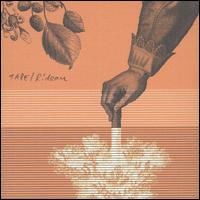 Until now I’d have called Tape’s musicseasonally or temperamentally effective, but Rideau arrives as a near-reinvention of the trio’s sound, theirmost fully-realized and best record yet. Tapehas clearly taken a chance with this one and I’m glad.
Until now I’d have called Tape’s musicseasonally or temperamentally effective, but Rideau arrives as a near-reinvention of the trio’s sound, theirmost fully-realized and best record yet. Tapehas clearly taken a chance with this one and I’m glad.
I enjoyed Tape’s first two records as perfect manifestationsof a familiar aesthetic. Opera and Mileau worked in glitchist blurrings of chamber room noise: smallmachines, gauzy strings plucked, harmoniums and harpsichords swelled anddisassembled in a humble and über-patient way. These early works are ephemeral in the slow-swarming of theirconstruction, to the point where any poignancy or nostalgia grasped, seems torefract through an autumnal filter, as the aging discolorations and thick airof an attic might transform a life’s old memorials into one of the same sadsubstance. More than mood music, thesefirst two releases support tableaux of wintry decay that feel many times toototal, too sunken into their scene. I amreminded both of the music of Piano Magic and the self-deprecating title totheir retrospective: Seasonally Effective.
They’ve shifted glitch processing away from being the force that actedupon or moved each piece forward. Instead the computer plays itself and plays with beautiful restraint,briefly augmenting and blending with significantly pared-down, close tocrystalline melodic foregrounds, these played with the same ephemeral paletteof strings and bellows that, without the shimmering digital action, warpcyclically and stone solid.
Rideau is five tracks, each longer, morerepetitious and also simpler than the Tape that came before, though the moodsand access points within the work appear immediately more various andnumerous. The same instruments are bothmore distinct and codependent within a rigid structure, placing many sectionsinto what feels at first like a drum-less post-rock archetype, like the mostdetermined (not “studied”) moments of a late Gastr or early Tortoiserecord. Taken for the duration, though,waving with their stoic parts and dusted with microcosmic variations, thesetracks take on the consecrated air of high minimalism.
The last two songs, “Exuma” and “Long LostEngine,” project this mantra with two-note guitar and keyboard swells thatexpand and contract along motorized routes, windows back into the antique moodof the first two records, before, in their persistence, opening onto sparklingclear, monolithic vistas: holy shit. The pristine weightiness of this recordingalmost makes me hope for a remix version, something like Stephan Mathieu’sreworkings for On Tape, somethingthat would glimpse these proud forms in a kind of dissolution.
Read More
- John Kealy
- Albums and Singles
 Lair of the Minotaur’s new single is a bit of a let down. Cannibal Massacreis visually pleasing, a tongue in cheek cannibal monster drawing on thefront and the CD itself is one of those nifty 3” CDs. However the musicgets too tedious over the length of the single and it’s only tenminutes long!
Lair of the Minotaur’s new single is a bit of a let down. Cannibal Massacreis visually pleasing, a tongue in cheek cannibal monster drawing on thefront and the CD itself is one of those nifty 3” CDs. However the musicgets too tedious over the length of the single and it’s only tenminutes long!
Southern Lord
“Cannibal Massacre (Extended Skin Reaping Mix)” wasextended far too much, it loses steam about halfway through the song.“Horns of the Witch” on the other hand is too short. At just over aminute I was only beginning to rock out when it unceremoniously ends. Cannibal Massacre has left me cold and I’ve no real desire to explore Lair of the Minotaur any further.
Read More
- Administrator
- Albums and Singles
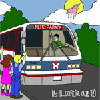 On his latest album, Randy Garcia sings “Music is the only reason on this Earth for some of us to stay,” and it’s a mantra that’s as catchy as it is bittersweet. Nerd Parade is a celebration of life and music, and it’s just another in a long line of quality home-brewed records from Garcia’s criminally overlooked Nophi Recordings.
On his latest album, Randy Garcia sings “Music is the only reason on this Earth for some of us to stay,” and it’s a mantra that’s as catchy as it is bittersweet. Nerd Parade is a celebration of life and music, and it’s just another in a long line of quality home-brewed records from Garcia’s criminally overlooked Nophi Recordings.Nophi
Randy Garcia has quietly been building an empire in central and south Florida, racking up an impressive catalog of releases that touch nearly every corner of the vast field of electronic music. Whether he’s releasing his own work under the r_garcia alias or putting out records by kindred spirits, the same enthusiasm and sense of purpose permeates everything he touches. It’s that enthusiasm that makes Garcia’s live performances so magical, and also what makes Nerd Parade a fun, eclectic ride through Garcia’s unique headspace.
Read More